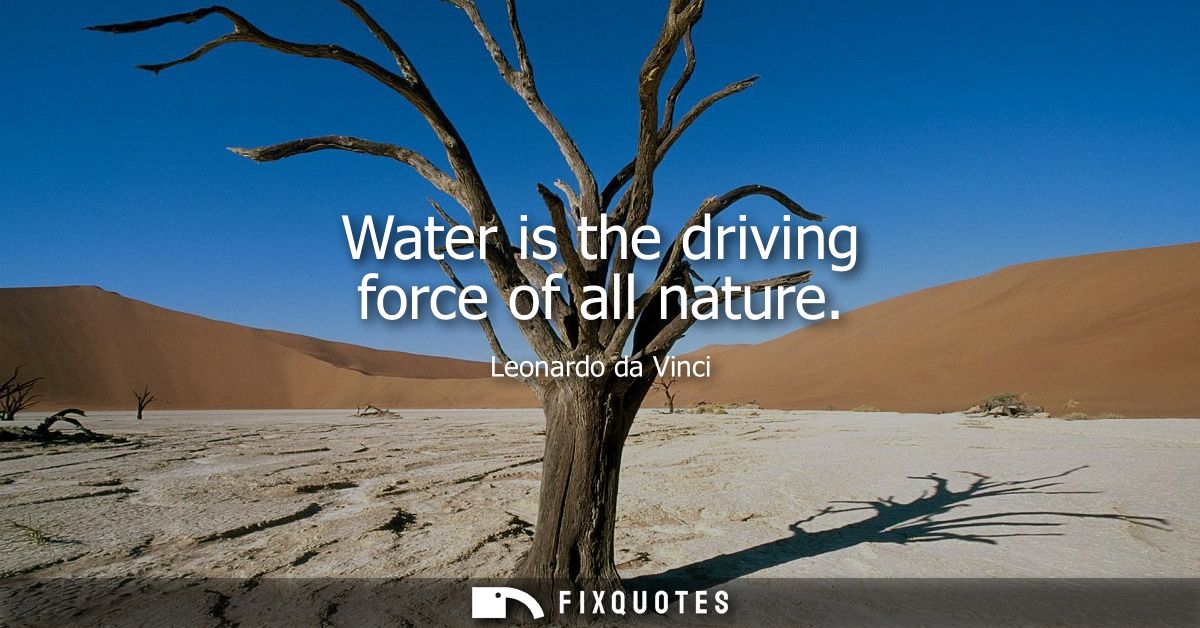"Water is the driving force of all nature"
About this Quote
Water shapes our world both physically and metaphorically, as Leonardo da Vinci observed centuries ago. It is the essential substance that sustains life in all its forms, enabling the flourishing of ecosystems from the simplest mosses to the tallest trees and the most complex animals. Without water, seeds cannot sprout, rivers cannot carve landscapes, and life remains dormant or nonexistent. Every living cell relies on water as the medium for chemical reactions, the solvent that carries nutrients, and the temperature regulator that sustains viability. Nature’s processes, growth, decay, weathering, renewal, are all driven by the presence, movement, and transformation of water.
Beyond its biological necessity, water is the great sculptor of earth. It erodes mountains, lays down sediment, carves valleys, and forms vast deltas and wetlands. Through rain, rivers, and oceans, water connects regions, supports agriculture, and replenishes entire environments. The dynamic cycle of evaporation and precipitation powers weather systems, influencing climate and the distribution of life. Even deserts, where water appears scarce, bear the unmistakable marks of water’s past activity, as ancient rivers once shaped the land and left behind minerals necessary for survival.
Human civilization’s development demonstrates water’s profound influence. Settlements arise near rivers and lakes, societies organize around its distribution, and conflicts and cooperation emerge from its scarcity or abundance. Water is a source of inspiration and beauty for artists and writers, symbolizing purity, transformation, and the flow of time. Leonardo’s words capture the essence that, at every level, from the molecular to the planetary, water underpins change and continuity alike. It is the universal agent driving cycles of creation and destruction, persistence and renewal. Recognizing water’s pivotal role reminds us of the delicate interdependence between nature and humankind, encouraging reverence and responsible stewardship for this invaluable resource.
More details
About the Author

